There is no sci-fi universe more classic, more enduring, than this one. Which is entirely fitting, since we are dealing with a 950-some year old Time Lord from Gallifrey…
Doctor # 1: The William Hartnell Years
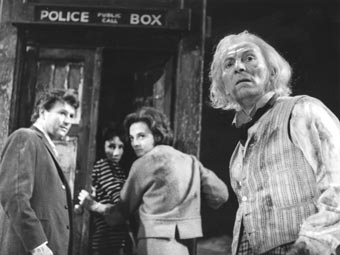
In 1963, a Sci-Fi classic, about a teenager and her strange unusual grandfather who travelled throughout space and time was born. This series was called Doctor Who.
Created by Sydney Newman, and produced by Verity Lambert during its first year, it made use of the concept of H.G.Wells’ ‘The Time Machine’ which had the role of the mysterious time traveler given to a mysterious being known as The Doctor. In the first years of the program, The Doctor’s origins were kept a mystery. Any reference to his origin in the first season was removed from production.
An actor named William Hartnell portrayed the first Doctor. He played the Doctor as something of a crotchety old man who looked after his daughter Susan, played by Carol Ann Ford. The first episode ‘An Unearthly Child’ had Susan’s teachers Ian Chesterton and Barbara Wright (played by William Russel and Jacqueline Hill) curious about Susan, and they followed her to what they perceived to be her home-a scrap yard at 76 Totters Lane.
They confront an old man who called himself The Doctor who was trying to evade Barbara and Ian’s questions, but when they heard Susan’s voice inside what was perceived to be a Police Call Box they charged inside only to find themselves inside a remarkable Space/Time machine called T.A.R.D.I.S. (Time And Relative Dimensions In Space) that was bigger on the inside than it was on the outside.
Through difficulty the TARDIS takes off from Totter’s Yard and arrives at a point in prehistoric history. While there the TARDIS remains trapped in the form of a Police Box, and there is a problem with the navigation where if the co-ordinates are set for one destination they land somewhere else entirely.
Throughout Hartnell’s tenure as The Doctor we meet his first extraterrestrial foes that become part of the mythology of Doctor Who. These foes are called the Daleks. Mutant creatures encased in metal shells that think only of conquest and destruction. Their battle cry “EXTERMINATE! EXTERMINATE! EXTERMINATE!” is one of the Daleks’ most identifiable trademarks. Others that appear are the Zarbi, a Time Lord called ‘The Meddling Monk’ (although he is not referred to as a Time Lord in the series), and in the last episode of Hartnell’s tenure, the Cybermen.
The companions had also changed throughout Hartnell’s tenure. Susan left after the first year. Barbara and Ian left the following year. A companion named Vicki appeared, as did a young man named Steven Taylor, and a girl named Dodo Chaplet. The final two companions in the Hartnell era were a girl named Polly and a young sailor named Ben.
Hartnell left the series in 1966, due to health reasons. He would return to the role only once in a tenth anniversary special called ‘The Three Doctors’. He would pass away at the age of 67 in 1975.
Sadly, due to a fire in the BBC film vault, not all of Hartnell’s episodes survived. Only a few exist in completed form with only audio tracks and pictures remaining of the missing ones left. A Doctor Who website does try to air these tracks and pictures as episodes in their own right. But sadly, a lot of Hartnell’s episodes (including a twelve part classic known as ‘The Dalek Masterplan’ where two of the Doctor’s companions: a girl named Katarina and a space officer named Sara Kingdom are killed) remain lost.
Doctor # 2: The Patrick Troughton Years
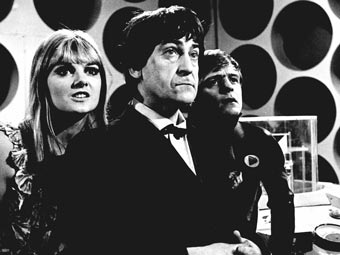
After William Hartnell’s departure, a new actor was chosen for the role of The Doctor. This actor’s name was Patrick Troughton.
Troughton’s portrayal of the Doctor was a departure from the character Hartnell played. While Hartnell was something of a well-dressed crotchety old man, Troughton played the Doctor as a baggy pants wearing clown who played a recorder as he went about his adventures. Carried over from the Hartnell era were the companions Polly and Ben for the first few episodes. These two would depart soon after making room for young Scotsman Jamie McCrimmon (played by Frazier Hines). Also to join would be two lady companions. First were Victoria Waterfield (played by Debbie Watling) and Zoe Herriot (played by Wendy Padbury).
If the Daleks were the main villains during the Hartnell era, the Cybermen were the main villains of Troughton’s. Originally from the planet Mondas, it would be revealed that the Cybermen also conquered the planet Telos to serve as a second home. Kit Pedler and Gerry Davis devised the Cybermen as a means of looking into the concept of ‘dehumanizing medicine’ where mechanical body parts replace human ones, so much so that they become machines themselves. Cold and emotionless, with only the desire for conquest being their only motivation, they also grabbed other life forms for Cyber conversion in order to increase their numbers.
Even though the Daleks would appear in two episodes, most of the episodes featured the Cybermen. Episodes such as ‘The Moonbase’, ‘The Tomb of the Cybermen’, ‘The Invasion’, and ‘The Wheel in Space’ were Cybermen-oriented. It was also in the episode ‘The Invasion’ where we meet the character of Brigadier Alistair Gordon Lethbridge-Stewart, who would play a major role the series when Troughton moved on. It should be noted that the actor who played Lethbridge-Stewart (Nicholas Courtney) is the only actor on record who has appeared in adventures with most of the actors who had played the Doctor.
Troughton’s tenure as the Doctor only lasted three years, a personal decision on his part. Sadly, like Hartnell, most of Troughton’s episodes were destroyed in the BBC vault fire mentioned above. Even fewer of Troughton’s episodes survived intact. But one that did survive intact would be Troughton’s last one, entitled ‘The War Games’, which would have lasting consequences for the character of the Doctor for at least three years.
In the episode ‘The War Games’ the Doctor and his companions find themselves on a planet where different warriors of different periods of Earth’s history fight staged life and death battles. An example of this would be like Mongol soldiers fighting World War II infantry. A Time Lord called ‘the War Chief’ who answered to the planet’s ruler ‘the War Lord’ arranged this. When the War Chief is killed the Doctor needed a way to get the other captive warriors home. So he sends a message to the Time Lords requesting help. In the process the Doctor was recaptured and placed on trial.
It is revealed that the Doctor left his people because he was bored with the Time Lords’ lifestyle, and he fought against many of the evils of the universe. During the trial the Doctor’s companions Zoe and Jamie were sent back home with their memories of their travels with the Doctor (except for their first adventure with him) erased from their minds. The Time Lords would then sentence the Doctor to exile on Earth. His TARDIS would be unable to operate, and his memory on how to repair it would be blocked from his mind. The Doctor would then be forced to regenerate his appearance making way for the next actor who would play the role.
Even though Troughton’s tenure lasted only three years, he would return to the role at least three more times. One was in the tenth anniversary special ‘The Three Doctors’, another would be the twentieth anniversary special ‘The Five Doctors’, and the third (and final time) would be alongside Frazier Hines as he reprised his role of Jamie McCrimmon in an episode called ‘The Two Doctors’ alongside sixth Doctor Colin Baker. The Two Doctors would be the last appearance of Troughton’s Doctor before he too passed on at the age of 69.
When the year 1970 rolled around fans were treated to a new Doctor, and a new set of circumstances for him.
Doctor # 3: The Jon Pertwee Years
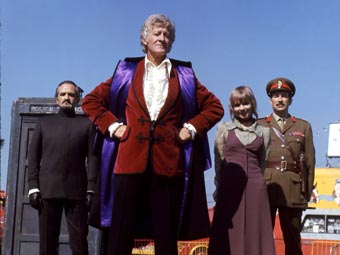
The actor who played the third Doctor was Jon Pertwee, a former circus acrobat who turned to acting. Pertwee was also active in many of the physical tasks of Doctor Who, like stunt work, which would help portray this version of The Doctor as something of a man of action.
Yet while being a ‘man of action’ he would also have remarkable technical aptitude. Aptitude that he would need if he was ever to rediscover the secrets to the TARDIS so he could get it working again and escape the sentence of exile to Earth imposed on him by the Time Lords. In a lot of episodes The Doctor would more times than not be tinkering with some aspect of his TARDIS hoping to get it working, albeit not always successfully. He also made use of a yellow roadster that he called ‘Bessie’ to get him around. He also had a futuristic car that was more like a hovercraft, but that would only be seen at least twice.
Even though he would be exiled to Earth, the Doctor would leave for other planets from time to time at the Time Lords’ discretion. Through these travels he would run across enemies such as the Ice Warriors – a foe from the Troughton era, a Space Marshall who hoped to radically terraform a planet an annihilate the species on it, and a creature on a planet named Pelladon. However, the one constant foe throughout the Pertwee era would be a Time Lord called ‘The Master’ as played by Roger Delgado.
If The Doctor was considered to be Sherlock Holmes, then The Master would be considered to be Professor Moriarty. The Master was considered to be brilliant, resourceful, cunning, and also evil. It should also be credited to Roger Delgado for infusing a certain amount of charm to the character of The Master as well making the character more intriguing to audiences.
During his exile, The Doctor served as scientific advisor to U.N.I.T. (United Nations Intelligence Taskforce) headed by Brigadier Alistair Gordon Lethbridge-Stewart (played by Nicholas Courtney). Sergeant John Benton (played by John Levine) aided him, and The Doctor found himself assisted by the likes of Doctor Liz Shaw (played by Carolyn John), spy wannabe Jo Grant (played by Katy Manning), and news journalist Sarah Jane Smith (played by Elisabath Sladen). The exile would only last three years, however, due to a rogue Time Lord named Omega looking to destroy them.
To combat Omega the Time Lords brought the first three Doctors together in a special called ‘The Three Doctors’. Patrick Troughton would act alongside Jon Pertwee while William Hartnell would make appearances on screen as being caught in a time eddy. This development in the script was due in most part to Hartnell’s ill health. But at the end of the Three Doctors, The Doctor would find his TARDIS working again, his memory on how to operate it restored, and able to wander among time and space once more.
The Pertwee version of The Doctor would wander for another year or two, making occasional visits to Earth, until he confronted a race of giant spiders on Metabelis Three, who sought a power source in the blue crystals that was too dangerous for anyone to possess. While the power of the crystals destroyed the spiders, as well as their leader the Great One, the radiation from the crystals forced the Doctor to regenerate again.
Pertwee would return to the role in the anniversary special ‘The Five Doctors’. He would also take part in a British stage production of Doctor Who called ‘The Ultimate Adventure’ before he would pass away at the age of 73.
Doctor # 4: The Tom Baker Years

When Tom Baker took on the role of The Doctor, he would soon find his version of the character thrown into the international spotlight as Doctor Who started to be seen on other countries as well as Britain. And it would be Baker’s portrayal of the Doctor that would lead to the character to become an icon in the Sci-Fi genre.
With his mop of curly brown hair, a smile full of charm and humor, a taste for jelly babies, not to mention the addition of an incredibly long scarf to his outfit, Tom Baker’s version of the Doctor would appeal to young and old viewers alike as he incorporated many of the aspects of the previous three Doctors into his own, the intellect of the first, the humor of the second, as well as the warmth, charm and technical expertise of the third. This led to Baker creating a character that was a mix of genius and clown, hero and buffoon. Baker’s Doctor would be solving a universal cataclysm one minute then the next offering a jelly baby to a tyrannical dictator looking to kill him. Fans worldwide genuinely loved Tom Baker’s Doctor.
Baker would stay with the role for the longest time on record, six years. And throughout those six years his tenure would include a mix of old and new villains alike. The Cybermen would appear once. Also appearing would be the Sontarans, who were a one-time villain during the Pertwee era. New villains would include the Zygons who controlled the Loch Ness Monster, an Osiran named Sutekh, as well a creature known as ‘the Nimon’ just to name a few.
Also appearing throughout the Baker run were special highlights, such as a return to Gallifrey, a one-season search for components to a powerful item known as ‘the Key to Time’, a new look for the TARDIS control room for the fourteenth season, a journey into a pocket-sized universe named E-Space, as well as a retelling of the origin of one of the Doctor’s main villains, the Daleks, at the hand of the creator of the Daleks – Terry Nation.
It would be this retelling of the Daleks’ origin that would lead to the birth of a new villain, the Kaled scientist Davros who would see to the destruction of the Kaled race to make way for the creation of the Daleks. And even though Davros was killed at the end of the episode ‘Genesis of the Daleks’, Davros would return one more time during the Tom Baker era, and three more times after that.
Also changed would be the character of ‘The Master’. Due to the passing of Roger Delgado a new actor was chosen for the role. But due to Delgado having done such a successful job with the character during the Pertwee era, there was concern that a new actor would have a problem emerging from Delgado’s shadow.
To that end the actor who would play the Master in the episode ‘The Deadly Assassin’, Peter Pratt, would play the character as a horribly disfigured monster at the end of his twelfth regeneration. During this episode it would be revealed that Time Lords could only regenerate twelve times in their life times, thus giving a sense of mortality to The Doctor.
Pratt would only play the role of the monstrous Master once, before he too would pass on. The actor Geoffrey Beevers (husband to Doctor Who companion Carolyn John {Liz Shaw}) would play the Master in the second to last Baker episode ‘The Keeper of Traken,’ before the role would be given to actor Anthony Ainley who would play the role towards the end of the BBC run.
Baker’s companions would consist of Sarah Jane Smith (played by Elisabeth Sladen), who was carried over from the Pertwee era, Dr. Harry Sullivan (played by Ian Marter), the savage warrior of the Sevateem Leela (played by Louise Jamison), the Time Lady Romana (played by Mary Tamm during the “Key to Time” season and then by Lalla Ward during the rest of Romana’s tenure in the TARDIS), the computerized dog K-9 (voiced by John Leeson), the stowaway from E-Space Adric (played by Matthew Waterhouse), and two young ladies that would carry over with Adric into the next version of The Doctor: Tegan Jovanka (played by Janet Fielding), and the girl Nyssa of Traken (played by Sarah Sutton). It should be also noted that after Lalla Ward left the show, she married Tom Baker for a brief time.
Baker’s last episode would be titled ‘Logopolis’ where The Doctor would seek to prevent the Master from destroying the universe with an entropy cloud that would destroy a good part of the universe. After the regeneration Baker would never return to the role of the Doctor again. When he was offered a role in ‘The Five Doctors’, he turned it down saying that he was not ready to return to the role so soon after leaving. Baker’s appearance in that episode would be credited to clips from an episode called ‘Shada’ which was left incomplete for years due to a BBC production strike.
Baker however would return for a video presentation of his tenure as the Doctor. He would also return to provide video narration for the incomplete episode Shada.
Doctor # 5: The Peter Davison Years
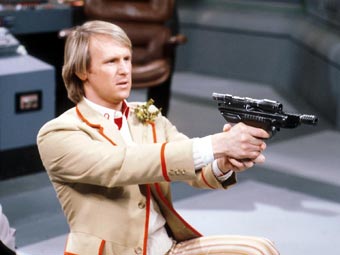
The youngest actor on record to have played the Doctor was Peter Davison. When he signed on for the role he was only 29. However, when he got the role he received advice from his boyhood hero, the second Doctor – Patrick Troughton – telling him not to stay longer than three years with the role. Davison would later take that advice to heart, mostly out of concern for being typecast to the role of The Doctor.
To say that Peter Davison had big shoes to fill is an understatement. This is largely due to him coming into the role after Tom Baker’s departure. Davison realized that he couldn’t do his version of The Doctor in any way like Tom Baker. So for Davison’s portrayal of The Doctor, he would bring in his love for the game cricket, and his costume would reflect that of an Edwardian cricket player. The Doctor would still have his intellect, but he would also have a youthful charm that none of the previous Doctors had.
Like the previous Doctors, Davison’s tenure would have its highlights. First up would be the destruction of the Doctor’s sonic screwdriver, which the Doctor had with him since the Troughton era. He would comment that it was as if he had lost an old friend. Also to happen would be the death of companion Adric (played by Matthew Waterhouse), when he tried to stop a freighter from collapsing into Earth that would wipe out the dinosaurs. The Cybermen who sought to destroy a futuristic Earth from waging war against them would abort this effort.
Also to return would be the concept of having a main villain. This villain would be The Master, played by Anthony Ainley. In each of the three seasons of the Davison era The Master would make an appearance or two in each season. The Master would also appear during ‘The Five Doctors’ episode, which was the 20th anniversary episode. In this episode Davison would appear alongside previous Doctors Jon Pertwee and Patrick Troughton. Due to William Hartnell’s passing the role of the first Doctor was recast with actor Richard Hurndall playing the part. Tom Baker’s appearance was confined to clips of the unaired ‘Shada’ episode that were inserted into the story.
The companions would consist of the above-mentioned Adric (Matthew Waterhouse), Nyssa of Traken (Sarah Sutton), and Tegan Jovanka (Janet Fielding). All three would carry over from the Tom Baker era, but it would be Tegan who would stay with Davison’s Doctor throughout most of his tenure. New companions would be Turlough (played by Mark Stickson), and Perpugilliam “Peri” Brown (played by Nicola Bryant), who would be in the last few episodes of the Davison era, and carry over to the next Doctor.
During the Davison era, the companion of Turlough was different from previous companions, because he was the servant of the evil Black Guardian from the ‘Key to Time’ season during the Baker era. The Black Guardian (played by Valentine Dyall) wanted Turlough to kill The Doctor, but instead Turlough would go back on the agreement and spare The Doctor’s life. He would resume his travels with The Doctor until his departure in the episode ‘Planet of Fire’ which would be the last ‘Master’ episode of the Davison era.
Davison’s last episode as the Doctor would be ‘The Caves of Androzani’, which Davison says is his personal favorite. In this episode the Doctor and Peri contract a deadly poison and the Doctor offers the antidote to Peri knowing that there is only enough to save one of them. Peri would be saved, and the Doctor would regenerate again.
Doctor # 6: The Colin Baker Years
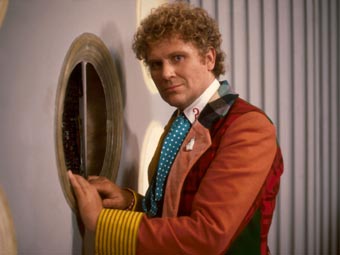
If Tom Baker was credited for serving the longest tenure during the BBC run, Colin Baker would be credited for serving the shortest (until Doctor #9). And for those wondering, there is no relation between Tom and Colin Baker.
Colin Baker would be brought in as The Doctor in the last episode of the 21st season entitled ‘The Twin Dilemma’ after Peter Davison’s departure. The choice of Colin Baker would be a controversial one to say the least, mostly due to the fact that during most of his career Baker had played villains. He played a character named Paul Merroney, who was referred to as ‘a prototype J.R. Ewing’, on a series called ‘The Brothers’. He also played a council guard commander named ‘Maxil’ in the episode ‘Arc of Infinity’ during the Davison era. In this episode Maxil would gun down The Doctor as he made his way through the corridors of Gallifrey. Baker would joke that he did it ‘to get Davison’s job’.
It should be noted that when Tom Baker departed the series Colin Baker sought to try out for the role, but he found out that it would be Peter Davison that would get the part. When Davison departed Baker said he didn’t give a try out much thought until producer John Nathan-Turner called him and asked him to try out.
Baker’s portrayal of The Doctor was considered to be that of a disturbed and unsettled person. His wardrobe would consist of a multicoloured outfit that clashed with itself. He would be prone to fits of loudness that would unsettle his companion Peri on numerous occasions. At one time during a post regeneration moment he almost strangled her. The reason for these actions was because Baker wanted to bring in a bit of a darker nature to the character, yet maintain the sense of heroism as well.
Baker considered his portrayal of the Doctor as reminiscent of William Hartnell’s portrayal, and he was saddened that fans weren’t allowed to see that. Part of the reason he believed was because of the costume. Baker wanted the costume to be more of a basic black, but since the Master already had a lock on that color scheme Baker couldn’t go with it.
Baker’s tenure would be brief, but memorable, especially in his first season alone. He would have an encounter with the ‘big three’ villains of the series: the Daleks (as well as their creator Davros played by Terry Molloy), the Cybermen, and the Master played again by Anthony Ainley. A new villainous Time Lady would appear named ‘the Rani’ as played by Kate O’Mara, and he would also appear alongside second Doctor Patrick Troughton, and his companion Jamie McCrimmon played by Frazier Hines in the episode.
Baker’s second season however would be placed on hold for some months, but when it debuted it was a whole season episode called ‘The Trial of a Time Lord’ in which The Doctor would be put on trial for interfering with affairs in the universe. The trial would actually serve to cover up events the corrupt High Council put into play, seeking to safeguard Time Lord secrets by transporting Earth across the cosmos and renaming it Ravolox. The Doctor would be exonerated, and he would come face to face with a darker version of himself the High Council brought into being called ‘the Valeyard’ played by Michael Jayston. The Master also appeared close to the end making him ‘the main villain’ during Baker’s run as well as Davison’s.
Baker’s companions would also be the shortest on record. Carried over from the Davison era was Peril Brown (Nicola Bryant), and Melanie Bush, a computer expert and fitness nut who thought the Doctor was overweight and needed to diet (played by Bonnie Langford).
Baker would not make it into a third season, however. The BBC wanted producer John Nathan-Turner to let him go after one episode in the following season. However Baker would leave without doing that episode. The image of him in the next season regenerating would be that of the next Doctor – Sylvester McCoy.
Doctor # 7: The Sylvester McCoy Years
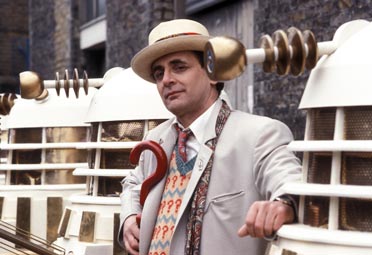
When Colin Baker left the role, Sylvester McCoy would be cast as the seventh Doctor. McCoy’s version seemed to incorporate versions of the previous Doctors as well, but his portrayal also seemed to be a little hard to follow, as fans weren’t all that sure what was going on in The Doctor’s mind.
During the first season The Doctor was still something of the time traveling hero that fans came to love, but his adventures seemed to take a different tone than previous ones. Destinations seemed to involve a condemned vacation resort called ‘Paradise Towers’ overrun by gangs, as well as being stopped at an intergalactic toll booth finding out that he and his companion Melanie had won a sweepstakes to go to Disneyland in the 1960’s – this later adventure would however feature The Doctor trying to stop a race of alien hunters from killing the last of a species called the Chimera. The first episode of McCoy’s season would feature ‘the Rani’ (played by Kate O’Hara), bringing about a flavor of menacing evil some fans might have been missing.
In the second season of the McCoy era producer John Nathan-Turner sought to bring about a sense of mystery about The Doctor, making him seem like more than ‘just another Time Lord’. This move would come to a head in the episode ‘Silver Nemesis’ where The Doctor would hope to use a statue of power called ‘the Nemesis’ to destroy the Cybermen and their fleet. Also appearing this season would be the last Dalek episode where the Doctor would trick Davros into launching a device called ‘The Hand of Omega’ into Skaro’s sun causing it to go supernova.
The third season of McCoy’s tenure would be his last, not to mention the last of the BBC run. The last episode would feature The Doctor facing ‘The Master. The series would not run on BBC television again until 2005. However, the adventures of the Doctor were not yet done.
McCoy’s portrayal would carry over to a series of books titled ‘The New Adventures’. In these adventures The Doctor would take on the role of ‘Time’s Champion’ as he interfered in events, and treated people – and in some cases his companions – like pawns in a chess game. This treatment would alienate him with several people, including his own companion Ace.
During McCoy’s tenure his companions would consist of Melanie Bush (Bonnie Langford), carried over from the Colin Baker era, and a girl named Ace (played by Sophie Aldred) who broke the mould when it came to playing companions. While some previous companions had a stereotype of being able to ‘run and scream at the same time’, Ace would be one to take a baseball bat to a Dalek and knock it’s head silly.
McCoy would return to the role of The Doctor in the 1996 television movie ‘Doctor Who’ to help bring about a regeneration sequence. The movie would serve as the only televised appearance of the next Doctor – Paul McGann.
Doctor # 8: Paul McGann
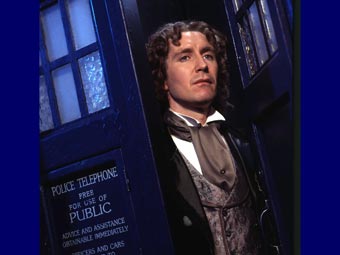
In the year 1996 Fox studios considered the possibility of bringing the character of The Doctor to American audiences. Originally they were going to go for a series, however they opted instead for a television movie that would serve as a back door pilot for the proposed series.
The movie would serve as a continuation of the old BBC television show, but how it would be done would leave a lot of fans asking questions. First would be idea of The Doctor kissing the girl and getting involved in a romance, something never done in any of the Doctor Who episodes. Even though there was some asking of the question, the concept was never explored until now. Also leaving fans wondering would be the recasting of the part of The Master, played now by Eric Roberts (brother of actress Julia Roberts).
Sylvester McCoy would at first play the role of The Doctor, with a narration done by Eighth Doctor Paul McGann (brother of actor Joe McGann), giving the sense that the Eighth Doctor was looking back on an adventure. The TARDIS console room would be changed from a white room with roundels to a spacious room with odds and ends. The feel of this console room seemed to emanate a feeling of H.G. Wells and The Time Machine.
In the movie the Daleks would execute The Master and he would ask The Doctor to take his remains back to Gallifrey; however, the Master’s protoform (for lack of a better term) would sabotage the TARDIS console causing him to land in San Francisco at the turn of the millennium. The movie would actually be filmed in Vancouver, British Columbia making use of screen shots to give the image of San Francisco. The Doctor, played at first by McCoy, would be shot and sent to the hospital. While there, the cardio specialist would inadvertently kill The Doctor, causing him to regenerate in the hospital morgue, and also leave him with a case of amnesia.
Throughout the movie The Doctor would seek to regain memories of who he is, with the help of Dr. Grace Holloway (played by Daphne Ashbrook). He would also seek to get parts from an atomic clock about to be debuted to repair a timing malfunction in the TARDIS that The Master had caused, as well as close the Eye of Harmony, which powers the TARDIS, before it sucks in all of Earth into a black hole.
Roberts’ portrayal of The Master was a far cry from the portrayals of Delgado, Pratt, Beevers and Ainley. While the previous Masters were evil, Delgado had an amount of charm to his portrayal while Ainley had a measure of controlled calm about him. Pratt and Beevers had easier times due to them playing the Master ‘in decay’. Eric Roberts, however played The Master as a psychopath that spit venom at them causing them to fall under his control, a far cry from past portrayals of the character. It should also be noted the Master’s protoform during this movie was that of a cobra that would possess an ambulance driver causing him to take over his body.
McGann, however, retained the Britishness of The Doctor character as much as he could. Something that was considered a must for the character, and that seemed to work in his favor. For even though the television movie did not work as well as executives and fans would have liked, McGann’s image was used in a new series of Doctor Who books. He would also serve to do several audio adventures of his version of The Doctor in later years.
Even though this movie would be the only time McGann would play the role of the Doctor on television as of this writing, he would consider returning to the role of the Doctor again. Whether he will do so or not remains to be seen.
Definitely not the end.
The Doctor Who Movies
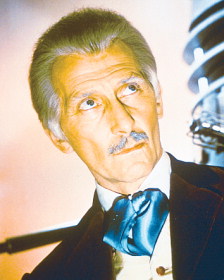
Around 1967-1968, a production company named AARU produced two Doctor Who movies. These movies starred Peter Cushing (famous to Star Wars fans as Grand Moff Tarkin) as a scientific genius named; you guessed it, Doctor Who.
The first movie was called ‘Dr. Who and the Daleks’ and it was based on the first Dalek episode filmed during the William Hartnell era. However there were fundamental differences. For one thing The Doctor called himself ‘Dr. Who’ in the movies while in the T.V. series he was simply called ‘The Doctor’ (except to Susan who called The Doctor ‘Grandfather’).
The movie also had versions of the Doctor’s original companions Ian, Barbara and Susan. However, these three had differences in their own right. For one thing, Susan was more of a twelve-year-old toddler (played by Roberta Tovey). Barbara was also a granddaughter of ‘Dr. Who’ and played by Jennie Linden, and Ian was simply her date for the evening.
Everyone in the Who family seemed to be gifted in science as the movie opens with Susan and Barbara reading science books. The TARDIS was simply one of Dr. Who’s inventions, and they leave their back yard by accident instead of by misunderstanding.
The first movie follows plot points of the original Hartnell episode, but is more condensed to eighty minutes, with some modifications. The Daleks seem to remain the same in terms of character, but their machine casings boast of colorful paint jobs and shoot gas from their gun stalks that kill their victims instead of supposed lasers.
The second movie is called Daleks: Invasion Earth 2150A.D. which follows from another script from the Hartnell era. In this one, however, there are some cast changes. Cushing and Tovey return to the roles of Dr. Who and Susan, but added to the mix is Dr. Who’s niece Louise (Jill Curzon), and an officer that walks into TARDIS by accident as he tries to foil a bank robbery named Tom Campbell (Bernard Cribbins). Most notably removed from this version of the Hartnell story is where Susan falls in love with a freedom fighter named David and leaves the TARDIS. Instead the movie ends with Tom Campbell returning to the jewel robbery he left and foiling the crime. Dr. Who, Louise, and Susan resume their travels in TARDIS.
The movies are cute B-movie fare, but another movie would not be made. It should also be noted that Dr. Who was just a gifted scientist in these films, and not the Time Lord of Gallifrey from the series. Cushing’s performance was an asset in these movies, and most likely carried the productions due to the natural charm he portrayed in his acting. Also Cushing’s portrayal was that of a sweet old man with a gifted mind while Hartnell was more the crotchety old man. Clearly the differences between Cushing’s take on The Doctor and Hartnell’s are as different as night and day.
– written by JSC1